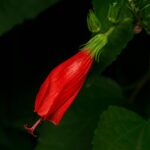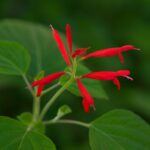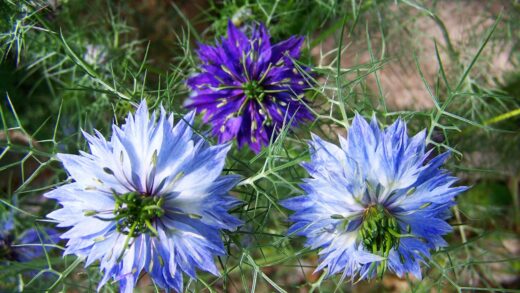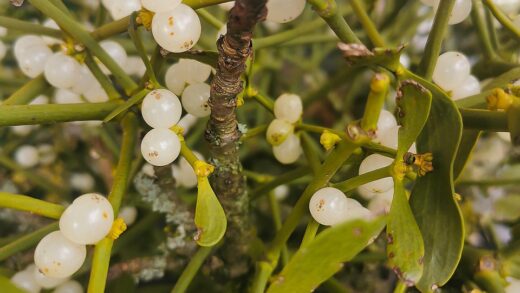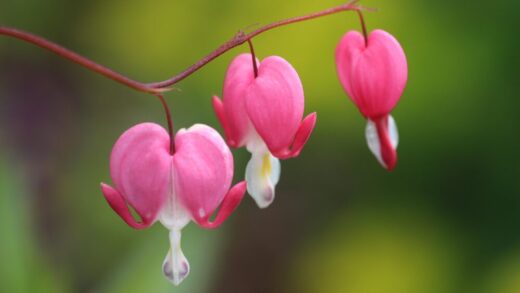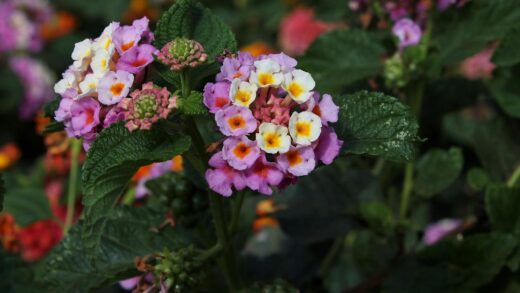Understanding the water requirements of the trifoliate orange is fundamental to its successful cultivation, as its needs evolve significantly from a newly planted specimen to a mature, established shrub. This species exhibits a remarkable degree of drought tolerance once it has developed a deep and extensive root system, making it a sustainable choice for water-wise landscaping in many regions. However, this resilience should not be mistaken for an indifference to water, especially during the critical establishment phase. During its first one or two years in the garden, consistent and deep watering is paramount to encourage the roots to grow deep into the soil profile, creating the foundation for its future hardiness and self-sufficiency.
The key to effective irrigation for the trifoliate orange lies in the principle of deep, infrequent watering rather than shallow, frequent applications. A thorough soaking that moistens the soil to a depth of at least 30 centimeters encourages roots to follow the moisture downward, making the plant less dependent on surface water and more resilient to periods of dry weather. This approach also allows the upper layer of soil to dry out between waterings, which is crucial for preventing the development of fungal root diseases that thrive in consistently damp conditions. The frequency of this deep watering will depend on several factors, including soil type, climate, and the age of the plant.
Seasonal variations play a significant role in dictating the irrigation schedule for the trifoliate orange. The plant’s greatest need for water is during the spring and summer months, which correspond with its periods of active growth, flowering, and fruit development. During hot, dry spells in summer, even established plants may show signs of stress and benefit from supplemental watering. Conversely, as autumn approaches and the plant prepares for dormancy, its water requirements decrease significantly. Winter watering is generally unnecessary unless there is an extended period of dry, mild weather, in which case a single deep watering may be beneficial to prevent root desiccation.
Ultimately, the most reliable method for determining when to water is not to follow a rigid schedule but to assess the moisture level of the soil itself. By checking the soil a few inches below the surface, a gardener can make an informed decision about whether irrigation is needed. This hands-on approach prevents both overwatering, which is a greater threat to this plant than underwatering, and allowing the plant to experience prolonged water stress. Proper water management, tailored to the specific conditions of the garden and the developmental stage of the plant, will ensure a healthy, vigorous trifoliate orange that can thrive for decades.
Water needs during establishment
The period immediately following planting is the most critical time for water management in the life of a trifoliate orange. During the first full growing season, the plant’s primary focus is on developing a robust root system that can sustain it in the long term. To support this, the soil around the root ball must be kept consistently moist, but not waterlogged. A newly planted shrub lacks the extensive root network needed to seek out water from deeper soil layers, making it entirely dependent on the moisture available in its immediate vicinity. Therefore, regular and careful irrigation is non-negotiable for successful establishment.
More articles on this topic
A practical watering schedule for a new trifoliate orange is to provide a deep soaking once or twice per week, especially during periods without significant rainfall. The goal is to deliver enough water to penetrate deeply into the soil, encouraging roots to grow downwards. The exact frequency will be dictated by the weather and soil type; sandy soils will dry out faster and require more frequent watering than clay-based soils. It is always better to water thoroughly and less often than to apply small amounts of water daily, which only encourages shallow, weak root development.
Monitoring the plant and the soil is essential to fine-tune the watering routine. A simple way to check soil moisture is to insert a finger or a small trowel into the soil near the plant. If the top 5-7 centimeters are dry, it is generally time to water again. Visual cues from the plant itself, such as slight wilting of the leaves, can also indicate thirst, although it is best to water before this stage of stress occurs. Overwatering can be just as detrimental as underwatering, leading to root rot, so ensuring the soil has a chance to partially dry out between waterings is crucial for maintaining healthy root function.
This intensive watering regimen should be maintained throughout the first spring and summer. As autumn arrives and temperatures cool, the frequency of watering can be gradually reduced. By its second year, the plant will have begun to establish a more substantial root system and will be less dependent on supplemental irrigation. However, it will still benefit from deep watering during any prolonged dry spells in its second summer. Consistent care during this initial one-to-two-year establishment phase is an investment that pays dividends in the form of a resilient, drought-tolerant plant for years to come.
Irrigation for mature plants
Once a trifoliate orange has been in the ground for two to three years and has developed a comprehensive root system, its water requirements change dramatically. A mature, well-established plant is exceptionally drought-tolerant, capable of withstanding typical summer dry spells with little to no supplemental irrigation in many temperate climates. Its deep roots can access moisture from lower in the soil profile, which is unavailable to more shallow-rooted plants. This resilience is one of the key attributes that makes it a valuable plant for low-maintenance and sustainable gardens.
More articles on this topic
Despite their toughness, even mature plants have their limits. During periods of extreme or prolonged drought, especially when combined with high temperatures, the trifoliate orange may begin to show signs of water stress. These symptoms can include wilting or curling leaves during the hottest part of the day, a dull or grayish cast to the foliage, or premature leaf drop. While the plant can often survive these conditions, its overall health and ornamental quality will be compromised. Providing a deep, thorough soaking once every few weeks during such severe periods will help alleviate stress and maintain the plant’s vigor.
The best time of year to provide supplemental water to mature plants, if needed, is during the summer months when the combination of heat and active growth places the highest demand on the plant’s resources. A single, deep irrigation that moistens the soil to a depth of 30 centimeters or more is far more beneficial than several light sprinklings. This ensures the water reaches the majority of the root zone and helps to sustain the plant until the next significant rainfall. For the remainder of the year, from autumn through spring, natural precipitation is typically sufficient to meet the needs of an established plant.
It is important to note that a mature trifoliate orange planted in a container will have vastly different water needs than one planted in the ground. Potted plants have a limited volume of soil from which to draw moisture, and this soil dries out much more quickly. A container-grown trifoliate orange will need regular watering throughout the growing season, often several times a week during hot weather. The soil in the pot should be checked frequently and watered thoroughly whenever the top few centimeters feel dry to the touch, allowing excess water to drain freely from the bottom of the container.
The role of mulching in water conservation
Mulching is a simple yet highly effective horticultural practice that plays a crucial role in the efficient water management of trifoliate orange plants. Applying a layer of organic mulch around the base of the plant creates a physical barrier on the soil surface that significantly reduces the rate of evaporation. This means that more water from rainfall or irrigation remains in the soil and available to the plant’s roots for a longer period. In regions with hot summers or water restrictions, this conservation of moisture can make a substantial difference in the plant’s health and reduce the need for supplemental watering.
A wide variety of organic materials can be used as mulch, including shredded bark, wood chips, compost, leaf mold, or pine straw. An ideal mulch layer should be approximately 5-7 centimeters deep. This depth is sufficient to provide the desired benefits without being so thick that it prevents water and air from penetrating the soil. The mulch should be spread evenly over the root zone, which typically extends out to the edge of the plant’s canopy, also known as the dripline. It is very important to keep the mulch from being piled directly against the main stem or trunk of the plant, leaving a small gap to ensure good air circulation and prevent moisture from causing the bark to rot.
Beyond water conservation, mulching offers several other significant benefits that contribute to the overall health of the trifoliate orange. It is highly effective at suppressing the growth of weeds, which compete with the plant for water, nutrients, and light. Mulch also helps to moderate soil temperatures, keeping the root zone cooler during the heat of summer and providing a layer of insulation against cold in the winter. This temperature regulation reduces stress on the root system and promotes a more stable growing environment.
As organic mulches slowly decompose over time, they provide a steady, slow release of nutrients and add valuable organic matter to the soil. This process improves the soil’s structure, aeration, and water-holding capacity, creating a healthier environment for root growth and beneficial soil microorganisms. Reapplying a fresh layer of mulch each spring is a good practice to maintain its depth and continue reaping its many benefits. Through the simple act of mulching, a gardener can create a more resilient, water-efficient, and healthier trifoliate orange.
Recognizing signs of water stress
Being able to identify the signs of both underwatering and overwatering is a key skill for maintaining the health of a trifoliate orange. The most common and easily recognizable sign of underwatering, or drought stress, is the wilting of leaves. During the hottest part of the day, the leaves may droop or curl inwards as the plant tries to conserve moisture. While the leaves might recover in the evening as temperatures cool, persistent wilting is a clear indication that the plant requires a deep and thorough watering. Other signs of chronic underwatering include yellowing leaves that eventually turn brown and crispy, premature leaf drop, and stunted growth.
Paradoxically, the symptoms of overwatering can often mimic those of underwatering, which can be confusing for gardeners. A plant that is sitting in waterlogged soil will have its roots deprived of oxygen, causing them to rot and die. As the root system becomes compromised, it is no longer able to absorb water and nutrients effectively, leading to symptoms in the upper parts of the plant. The leaves may turn yellow (a condition known as chlorosis), wilt, and drop from the plant, much like a plant that is too dry. This is why it is absolutely critical to check the soil moisture before automatically adding more water to a wilting plant.
The key difference in diagnosing the problem lies in the condition of the soil. If a plant is wilting but the soil around it is dry several inches down, it is clearly suffering from a lack of water. However, if the plant is wilting and the soil is soggy, saturated, and perhaps even has a sour smell, then overwatering and the resulting root rot are the culprits. In the case of overwatering, immediate action is needed to try and save the plant. This involves ceasing all watering and allowing the soil to dry out as much as possible. For container plants, this may mean repotting into fresh, dry, well-draining soil after trimming away any dark, mushy, rotted roots.
Learning to observe the plant and its environment provides the best clues for proper water management. A healthy, well-watered trifoliate orange will have firm, vibrant green leaves and exhibit steady growth during the season. By combining visual inspection of the plant with the physical act of checking soil moisture, a gardener can accurately assess the plant’s needs. This attentive approach allows for timely intervention, ensuring that the plant receives the right amount of water to prevent stress and promote long-term vitality.









